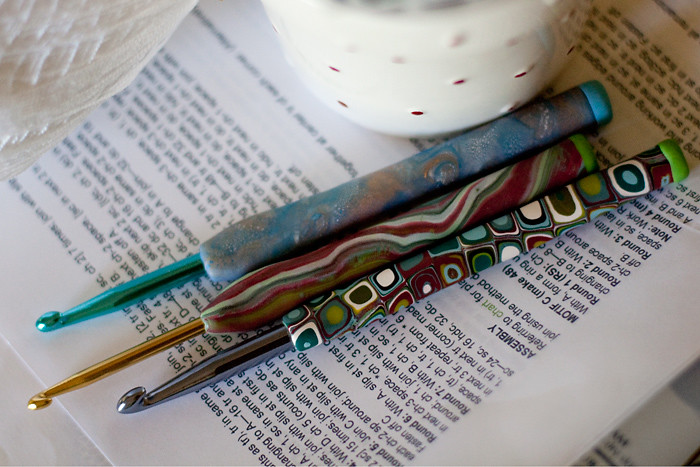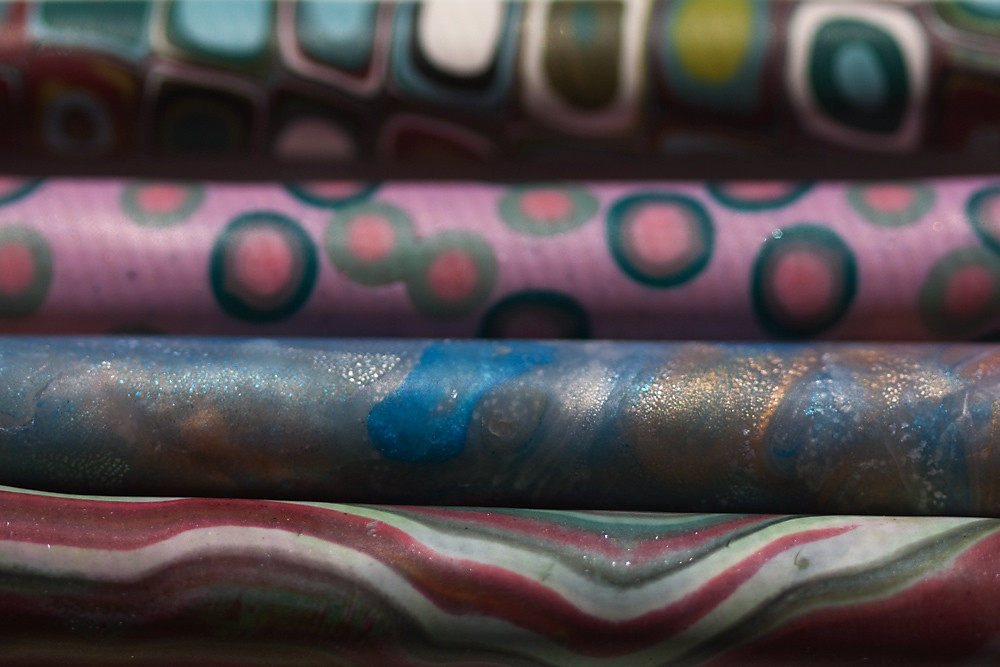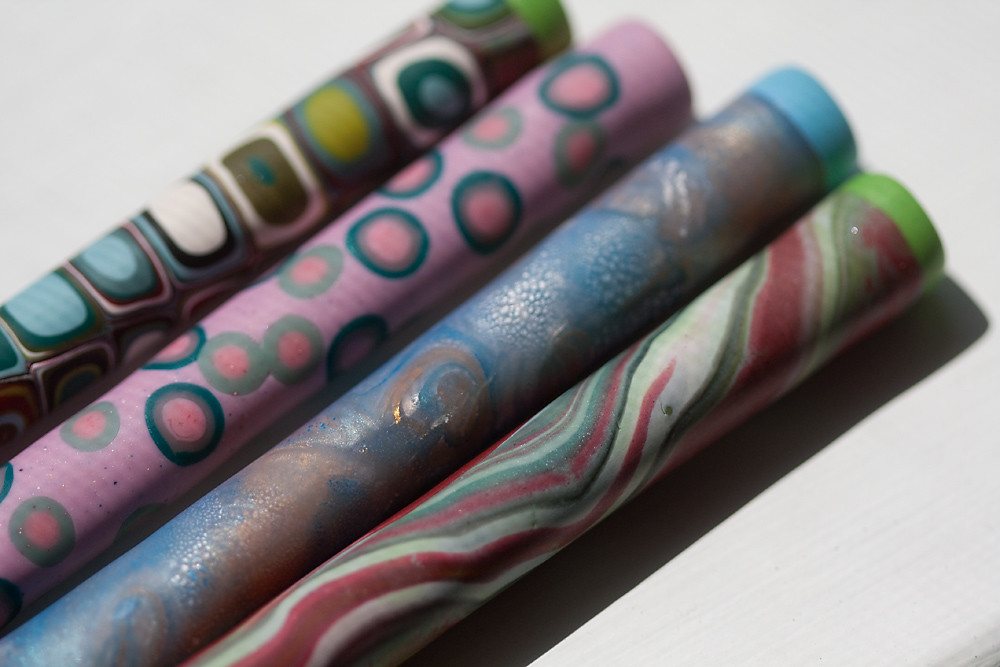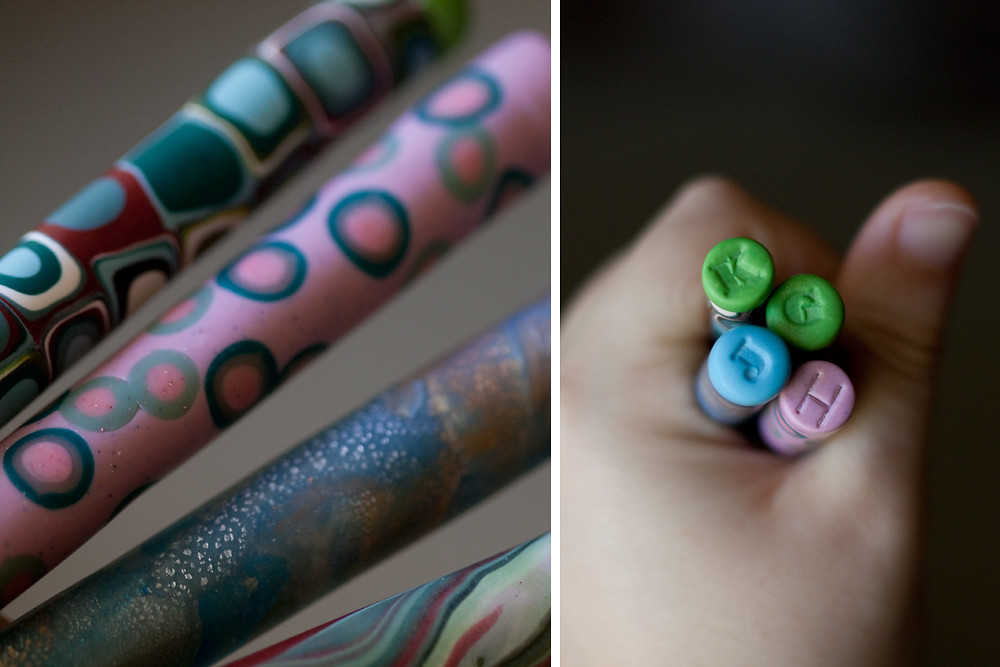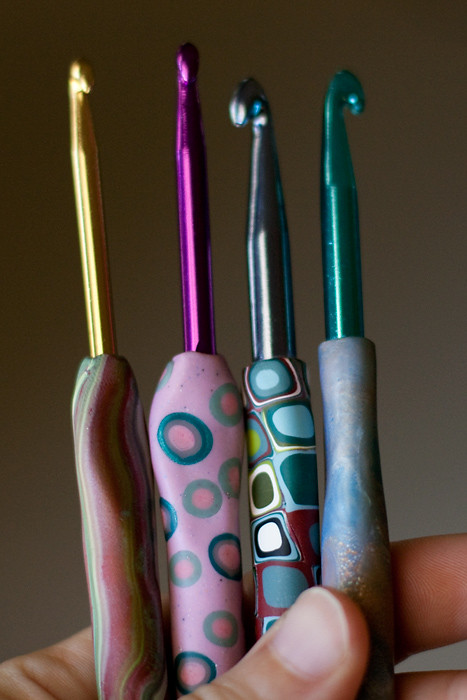Ever since I started crocheting seriously, I've planned to "eventually" try covering a crochet hook with polymer clay. (Not surprising, considering that before I became obsessed with crochet, I was similarly obsessed with polymer clay.) Yesterday afternoon, I finally gave it a try.
I chose a few hooks that I have duplicate sizes of, which was important to me because I want time to decide whether I prefer polymer clay-covered hooks or uncovered ones-- and I'd rather not have to go buy more uncovered hooks, should it turn out that the clay-covered ones aren't as comfortable for me to use.
With a few hooks in hand, I went to my long-neglected polymer clay supplies and pulled out some scrap clay and leftover bits and pieces from previous projects. I wanted to try out a variety of looks, so I chose a retro/mod cane (a.k.a. a "Klimt cane" or extruded cane) for one... simple marbled scrap clay for another... the remnants of a sparkly mokume gane block (made with translucent clay and acrylic inks)... and slices of a couple of tiny canes layered over clay mixed with embossing powers and "a little of this, a little of that".
Before covering the hooks, I sat down and crocheted a little, paying attention to how I hold the hook. It's something you don't think about much, but each of us has our own way of holding the hook. I knew I held mine like a knife (as opposed to a pencil), but I wasn't sure whether or not I use the thumb-rest (the thinner part of the hook where the size and brand are embossed). It turns out that I do!
When looking online at examples of clay-covered crochet hooks, it felt like it was most common to leave the thumb-rest uncovered-- but I wanted to cover them on these hooks. Since I do use the thumb-rest, I created a thumb-rest in the polymer clay covering by simply pressing it between the thumb and pointer finger until it was slightly flattened in the area where the thumb-rest would normally be.
Because I covered the thumb-rests (where the hook's sizing information is located), I made sure to notice the size and stamp (or otherwise mark) the appropriate identifying letter on the bottom of each hook.
The final touch was a little time spent hand-buffing them with a scrap of old denim-- a nice excuse to sit outside on the swing and listen to some music. ;o) Buffing by hand doesn't give you the high shine you get from an electric buffing wheel, but I didn't want to haul that heavy buffer to the table... or clear a spot for it on the table... or deal with the buffer, period. So a gentle sheen it is. (g)
(It's not really necessary to sand or buff these hooks at all, but I thought it would make them more pleasant to handle and look at, so it was worth a little extra effort for me. I hope to be using these hooks for years to come.)
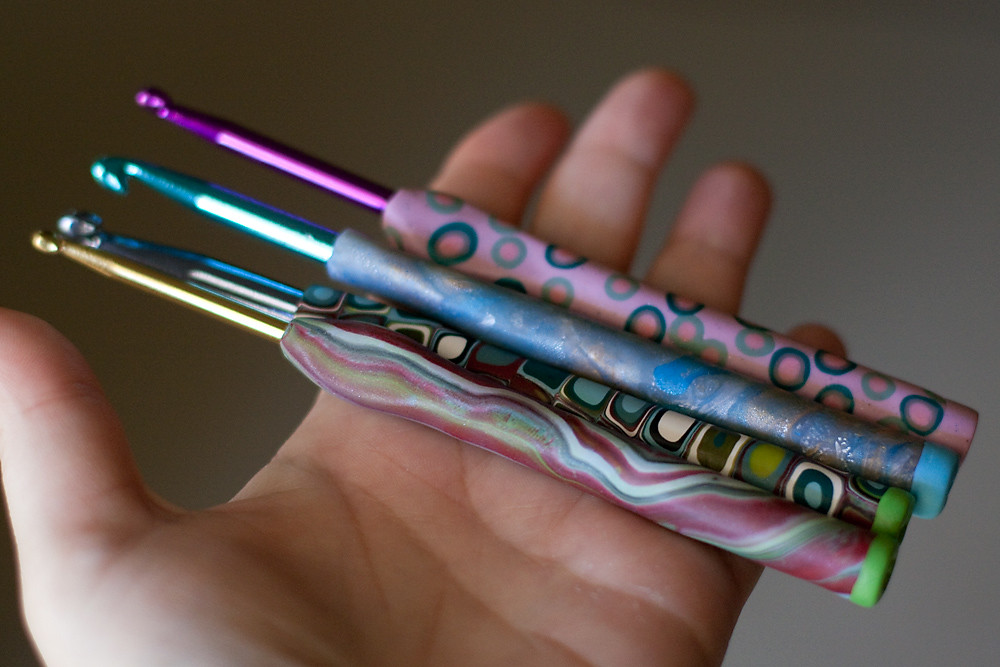
They're not absolutely perfect, cosmetically, but they'll serve their intended purpose, and they're certainly no worse to look at than an uncovered hook. (And each is definitely one-of-a-kind. (g))
I crocheted a little last night and this morning with one of my clay-covered hooks. At first, I thought my gauge might be slightly bigger/looser with the clay-covered hook, but comparing a little more closely between a swatch from a clay-covered hook and a non-clay-covered hook, it seems that if there is any difference, it's negligible-- certainly no more than can happen any time with changes in mood/yarn tension.
It does feel different, switching from a plain crochet hook to one with a clay handle. I think I was a little slower making that first motif with the new hook, but by the time I was working on the second motif, I was picking up speed-- so it seems likely that it's just a matter of adjustment and what you're used to.
I've never used anything but a plain, old-fashioned crochet hook-- none of the ergonomic or flat-handled hooks-- so I can't compare it to those, but I'd guess these feel closer to crocheting with a Clover hook than to your typical round aluminum or acrylic hook. Also, the clay itself isn't that heavy, but if you make a really large handle, it can add to the weight of the hook. (However, there are very lightweight clay blends available. If you wanted a larger handle, that might be an option.)
I still have another aluminum hook in a duplicate size that I'm thinking of covering soon... and I have a duplicate of a tiny steel crochet hook, too (the type used for thread crochet). I'd be very interested to see how it feels to crochet with one of those in a polymer clay handle! I'm also curious to try adding a handle that doesn't cover the thumb-rest portion of the hook. They're so numerous online that I figure they must feel ok to work with, even though they look like they'd be uncomfortable, to me. I'll probably try one like that. If I hate it, I can always go back and cover the rest of it, too.
I'm tempted to go on a hook-covering spree, but I'll try to hold back. Even though they seem ok so far, I'm still not convinced I like hooks better with the clay handles...
